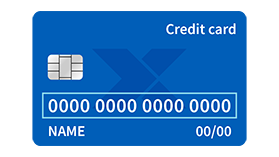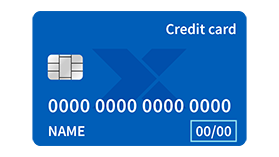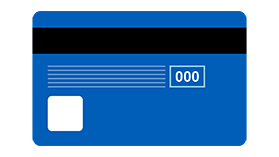Go paper-free
Amend paper-free preferences for your statements and communications.
Do you know what all of the numbers on your credit card mean? Let us tell you.

This is the 16-19 digit number on the front of your card. It’s completely unique to your card.

These numbers represent the month and year your card was issued, and when it will expire.

Also known as a ‘CVV’. For Mastercard and Visa, it’s the last three digits of the number printed in the signature strip.
Sometimes called the ‘long number’, it features on the front of your credit card and can be anything from 16 to 19 digits in length. Its official name is a Permanent Account Number, or ‘PAN’.
Rather than being completely random, this number is unique to you, including information used to identify your account, card and who it’s issued by.
The first digit indicates the provider:
The first six digits help to identify the issuer of the card, known as an Issue Identifier Number or ‘IIN’.
The numbers following that relate to your account, apart from the last one which is known as a ‘check digit’. This helps us to check that a full credit card number has been provided, in the right order, when you make a card payment or purchase.
This system for generating credit card numbers is used all over the world. It was invented in 1954 by IBM engineer Hans Peter Luhn.
These numbers indicate the month and year your card was issued, and when it expires. For example, 07/22 would be July 2022.
Credit cards are usually issued for two to four years, being renewed just before the expiry date. You might notice that the ‘expires end’ date is a month later than the ‘valid from’ date. This overlap gives you a bit of extra time to make the switch to your new credit card.
By the end of the ‘expires end’ month, your old card won’t work anymore, so it’s a good idea to start using a new card as soon as it arrives. That way, you’ll avoid any problems.
If your credit card is re-issued – for example, as a replacement for a lost card – your new card will have extended ‘valid from’ and ‘expires end’ dates.
For security, cards should be cut up and disposed of carefully when they expire.
When you buy something online or over the phone, you might be asked for a ‘CVV’, ‘CVC’, ‘CVN’, ‘CVV2’ or a ‘security number’. They’re actually the same thing.
This serves as a card verification number or code. Because it’s only printed on the card itself, when you provide it, we’re more confident that the physical card is in your possession.
On Mastercard and Visa credit cards, you’ll find the security number on the back of your card. It’s the last three digits of the number printed in the top right-hand corner of the signature strip.
On American Express credit cards it’s a 4-digit number printed on the front, just above and to the right of the long credit card number.
Your Personal Identification Number or ‘PIN’ is one number you won’t find printed or embossed on your card. It’s the four-digit number you enter to make payments in-store, or at an ATM to withdraw cash.
There are lots of numbers on your credit card, and they all have special jobs.